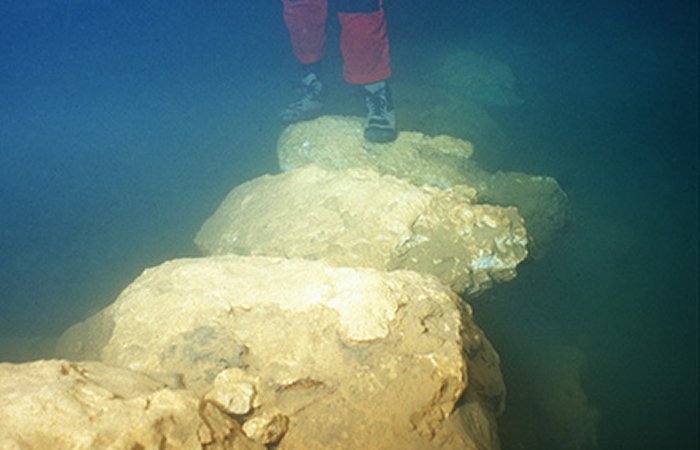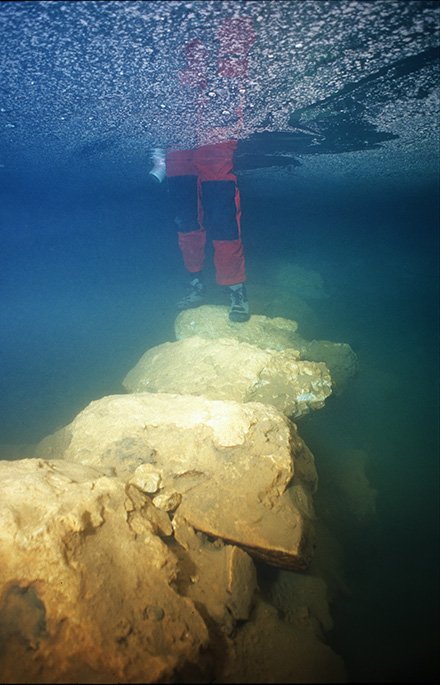Jan Bartek – AncientPages.com – Reconstructing early human colonization of Mediterranean islands is challenging due to limited archaeological evidence. However, a recent study conducted by researchers from the University of South Florida has yielded substantial insights into the human colonization of the western Mediterranean. The investigation centered on a submerged ancient bridge discovered within a Spanish cave, which has provided evidence suggesting that human settlement in the region occurred considerably earlier than previously postulated.
Bogdan Onac studies the phreatic overgrowths seen in this photo. They grow exactly at sea level and offer a more accurate reconstruction of past sea level history. He used these to determine the age of the submerged bridge. Photo credit: M.À. Perelló
Professor Bogdan Onac’s research at the University of South Florida provides evidence of early human activity in Mallorca’s Genovesa Cave. These findings challenge existing theories and narrow the gap between estimated settlement timelines on Mediterranean islands.
The implications of this research are significant, as they necessitate a reevaluation of current understanding regarding the chronology and patterns of human migration in the Mediterranean region during prehistoric times.
“The presence of this submerged bridge and other artifacts indicates a sophisticated level of activity, implying that early settlers recognized the cave’s water resources and strategically built infrastructure to navigate it,” Onac said in a press release.
The cave, situated near the Mallorcan coastline, exhibits passages that have been inundated due to elevated sea levels. Notably, distinct calcite encrustations have formed during periods of heightened sea levels. These formations and a light band on the submerged bridge help track past sea-level changes and determine when the bridge was built.
Despite being the sixth largest island in the Mediterranean, Mallorca was among the last to experience human colonization. Previous research had postulated human presence dating back approximately 9,000 years; however, inconsistencies and poor preservation of radiocarbon-dated materials, such as proximate bones and pottery, cast doubt on these findings. More recent studies have utilized charcoal, ash, and bones discovered on the island to establish a chronology of human settlement approximately 4,400 years ago. This timeline aligns with significant environmental events, including the extinction of the goat-antelope genus Myotragus balearicus.
Close-up view of the submerged stone bridge from Genovesa Cave, Mallorca, Spain. Photo credit: R. Landreth
Through an analysis of mineral overgrowths on the bridge and the elevation of a coloration band present on the structure, Onac and his research team have determined that the bridge was constructed nearly 6,000 years ago. This finding predates previous estimations by more than two millennia, thereby reducing the temporal disparity between eastern and western Mediterranean settlements.
“This research underscores the importance of interdisciplinary collaboration in uncovering historical truths and advancing our understanding of human history,” Onac said.
See also: More Archaeology News
This study was supported by several National Science Foundation grants and involved extensive fieldwork, including underwater exploration and precise dating techniques. Onac will continue exploring cave systems, some of which have deposits that formed millions of years ago, so he can identify preindustrial sea levels and examine the impact of modern greenhouse warming on sea-level rise.
This research was done in collaboration with Harvard University, the University of New Mexico and the University of Balearic Islands.
Written by Jan Bartek – AncientPages.com Staff Writer








